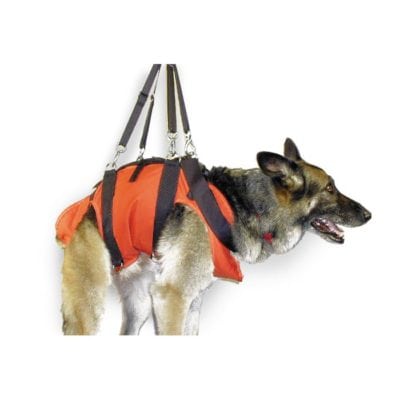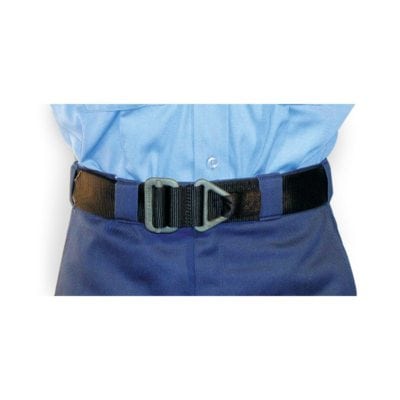Your cart is currently empty!
RNR Guide – How to Select a Firefighter Bailout Kit
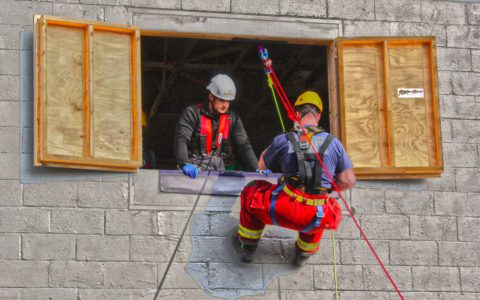
A firefighter bailout kit is an important safety feature for firefighters and other rescue workers. This provides a fast and effective way to get out of a dangerous situation and get to a safer location. In this guide, we will explain how to select a bailout system to fit your needs.


Basic Components of a Bailout System


Before selecting a kit for your department, you need to know the primary components of a bailout system. These include…
- Hook: The hook acts as the anchor for the bailout kit. It can be attached to part of the building, a windowsill, a pole, or anything else that can support the weight of the person using it.
- Descender: This is the part of the bailout system that allows the user to control the speed of their descent. The descender uses friction to slow or speed up the descent, depending on what the user needs at the time.
- Rope: The rope works with the descender to guide the user to their destination. The materials that the rope is made of depends on the desired use: fire tech, personal escape or safe tech. For instance, a fire tech rope is fire rated, which means it can stand up to the heat of the flames. A personal escape rope is made to be lighter and easier to carry.
- Harness: Most bailout kits use a full seat harness so the user is comfortably supported during the descent. This connects to the rest of the system using a carabiner. Seat harnesses provide better support than belts, and they are still easy to get into in an emergency situation.
How Many Bailout Kits Do You Need?
Should each firefighter have their own bailout kit, or should you have one for select positions in a rescue situation? The answer to this often comes down to funding availability, since it will cost a lot more to equip every rescue worker with their own system. With that in mind, you also need to consider the safety that comes with having a kit for each person. No matter what situation someone gets into, the firefighter will always have a bailout kit on hand to escape in an emergency. In the fast-paced world of search and rescue, this could be the difference between life and death.
From our experience, most firefighters like to have their own equipment anyway just for peace of mind. They know where the bailout kit has been, how it’s been used, where each component is, etc. If you can find the funding for your agency to provide a kit for each firefighter, it will be in your best interest overall.
Evaluating the Harness


The harness is one of the major components in a bailout system, and it’s one you should focus on when selecting the perfect bailout kit. As we mentioned above, seat harnesses are often preferred over belt harnesses for their comfort and support. Gut belts are less expensive and easier to attach to gear than class II harnesses, but they aren’t as versatile.
Think about the gear that you have now or gear you may purchase in the near future. Which harness setup best works with that gear? Does the gear already have an internal or external harness built in that could connect to the bailout system? If so, is there a carabiner included that will support the load and fulfill your needs? If you need to retrofit your harness or bailout kit to work with older equipment, think about how that will work. You don’t want to purchase something that will be costly to retrofit.
If you are purchasing harnesses to go with your bailout kits, you need to consider the fitting for each of them. Are they one size fits most, or will each person have a custom fit harness to use? Look at the harness as part of a larger system and find the one that will best work for your agency.
Choosing the Descender
The descender or “descent control device” is another important element of your bailout kit selection. In our GT Hook Firefighter Bailout System, you have the choice between an F4 descender and an FCX descender. Let’s compare them.
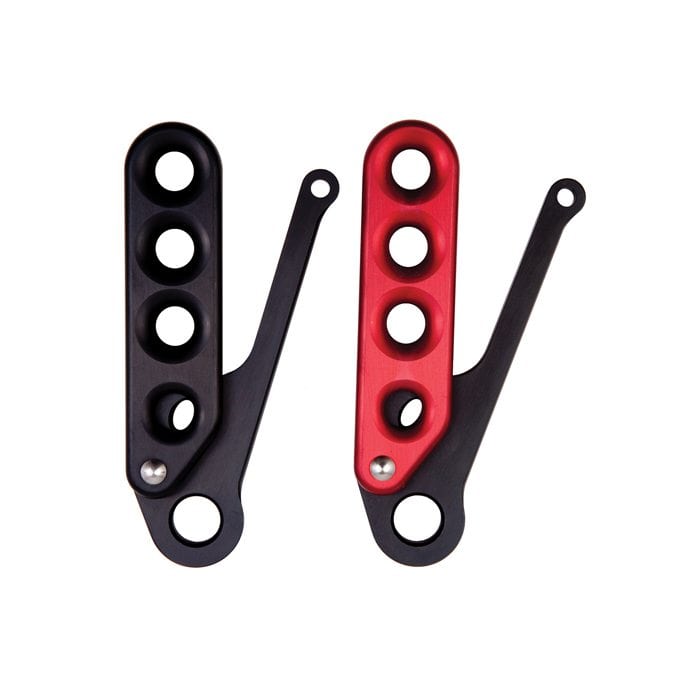

F4 Descender: Made by Sterling, this lightweight descent control device features an auto-locking mechanism for enhanced security and hands-free mobility. It’s designed for swift horizontal movement, and it has smooth beveled holes that are easy to thread rope through. The bevels ensure that the rope will not get damaged as the descender moves along it. This descender is perfect for fast, high-stress situations because of its security features and efficient, uninterrupted movements.
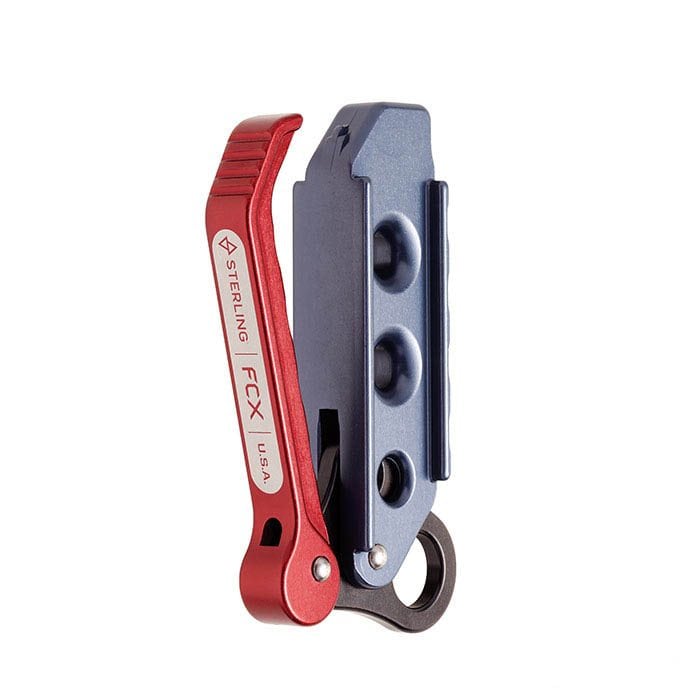

FCX Descender: The FCX descender is also made by Sterling. It is slightly heavier than the F4, but it still only weighs 7.8 ounces (compared to 6 oz). It has elevated side rails to reduce the risk of sill and glove interference, and it has a spring loaded handle that remains out of the way until you’re ready to use it. The FCX features a cam braking system for maximum descent control, and it has a click-to-neutral function for horizontal movements. It is a little more expensive than the F4, but the extra cost is well worth the engineering for many applications.
There are other descenders on the market that may come with your bailout kit, but these are the ones we use in our system. Compare your options closely to select the right descender for your needs.
Selecting the Rope
The material a rope is made of will determine how light it is, how much weight it can support, and how well it can stand up to fire. Each rope has an MBS rating (minimal breaking strength), which represents the amount of force it can be subjected to before breaking. This rating applies to new, unused ropes, since a rope’s strength can decline after extended use. Our bailout system includes three types of ropes.
- Fire Tech: This rope is just 0.295 inches (7.5 mm) in diameter and weighs 2.1 pounds per 50 feet of rope. It is fire-rated and has an MBS rating of 5,889 pound-forces. It is constructed entirely out of Technora material, making it the most durable selection for firefighter rescue applications.
- Personal Escape: This is the lightest and most affordable rope option, but it is not as durable as the other ropes. It is constructed of nylon, which has a lower melting point than Technora. With that in mind, nylon was recently tested with a remote anchor and heated to 635 degrees. It was able to last through all the tests conducted before 9 minutes. It is not the ideal choice for fire-related situations, but it will work well in most emergencies. Nylon personal escape ropes have a 3,484 pound-force MBS rating and weigh 1.45 pounds per 50 feet.
- Safe Tech: This rope is 0.315 inches (8 mm) in diameter and weighs 2.8 pounds per fifty feet of rope. Safe tech ropes are like a hybrid of fire tech and personal escape ropes. They have a Technora outer layer and a nylon core. The Technora provides superior fire protection, while the nylon core keeps the weight as low as possible. This rope has an MBS rating of 4,383 pound-forces.
Assessing the Hook
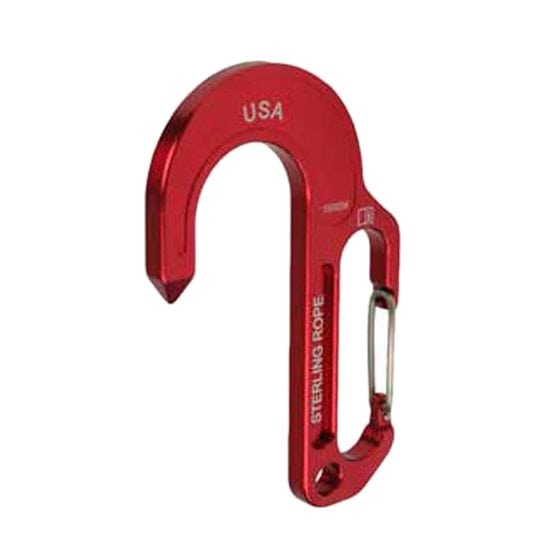

The hook in a bailout system determines how strong the system is as a whole. If it cannot effectively latch onto a remote anchor, window sill or other feature, the bailout kit will not work. Our bailout kits include a Sterling Lightning GT hook or LIghtening hook, or a Crosby hook which has a gated hitching slot integrated on the back of the hook. Rather than trying to tie complex knots in the dark, you can simply click the rope through the hitching slot and go. This drastically cuts down on rescue times, which is critical in a bailout situation
As an alternative, some firefighting groups use ropes with carabiners in place of pre-built hooks. This will work from a functional standpoint, but it is far from ideal. These systems are often difficult to rig, especially in an intense, high-pressure situation. On top of that, they may require you to latch onto a remote anchor, which may not always be available. With a hook, you can secure yourself to a window sill if needed or just about any other structure in the area. The extra versatility and efficiency are well worth the cost.
Consider the Carrying Bag
How will your workers secure their bailout kits to themselves? Will the bag be out of the way, easy to open/close, and convenient? Our kit comes with a durable and lightweight carrying bag, but you should think about the carrying system that best works with your equipment. The bag should be large enough to support the length of rope you will be using, and it should have organizational areas for the hook and other elements of your bailout system.
Think about the bag’s position on the body. A side-mounted bag usually feels more comfortable, but a lumbar bag provides a narrower profile. If you can find different ways to secure the bags, you can give your users both options, depending on the rescue scenario. The carrying bag may not seem like an important part of bailout kit selection, but the ease of access makes a world of difference in a real-life rescue event.
Training Your Firefighters to Use the New Bailout System
Once you have pieced together the perfect bailout system for your agency, you need to train the workers on how to use it. Make sure they are familiar with every component of the new system, from the storage bag to the hook and beyond. Even if the new system is similar to the old one, you need to make sure that they are well-versed on the equipment before using it in a real world application. Proper training will ensure that you get the most of your bailout system from the start.
Choosing the right bailout kit is not a straightforward process. There is no cookie-cutter solution that works for every agency. Nevertheless, you can find a good fit for your needs and your budget if you keep the tips above in mind. If you need more assistance in your bailout kit selection, contact the experts at Rock N’ Rescue.

